Tavole parietali del Museo Botanico
![o:62039. Falterblumen [dettaglio] o:62039. Falterblumen](https://phaidra.cab.unipd.it/static/padova/img/collections/tavole-parietali-del-museo-botanico/Falterblumen.jpg)
La collezione comprende 98 tavole didattiche, di argomento botanico, prodotte tra la fine dell’Ottocento e i primi del Novecento.
La serie più numerosa riunisce 68 tavole dal titolo “Ausländische Kulturpflanzen in farbigen Wandtafeln” e raffigura piante esotiche, originarie dei cinque continenti, principalmente utilizzate a scopo alimentare quali cacao, zenzero, manioca e olivo. Le illustrazioni, di Karl Bollmann, sono molto particolareggiate, a colori su sfondo nero ed affiancate da numeri che fanno riferimento a brevi note descrittive riportate alla base del pannello. Le tavole furono pubblicate nel 1899 a Braunschweig da F. Vieweg und Sohn e fanno parte di un testo compilato da Otto Wilhelm Thome e Hermann Zippel dal titolo “Ausländische Kulturpflanzen in farbigen Wandtafeln mit erläuterndem”. La quasi totalità delle tavole riporta immagine e descrizione di una singola specie ma ve ne sono alcune in cui le piante sono due. Nella collezione conservata a Padova tale situazione si presenta sette volte con accoppiamenti tra i soggetti che distinguono la raccolta patavina da quella custodita in altre strutture quali la Harvard University.
Il secondo gruppo è formato da una serie completa di 12 tavole di biologia vegetale rappresentanti sia particolari della pianta, quali le radici, i tessuti, le foglie e la struttura dei fiori, che i diversi sistemi di fecondazione e le varie tipologie di frutto e di semi. Pubblicata dalla Paravia agli inizi del Novecento, è caratterizzata da immagini a colori affiancate da numeri riferiti, anche in questo caso, a una breve descrizione finale.
La collezione prosegue con dieci tavole pubblicate i primi del Novecento a Stuttgart da Eugen Ulmer e appartenenti alla serie “Botanische Wandtafeln” di Hermann Ross e H. Morin. Alcune di queste trattano una singola specie quale la patata o il nocciolo mentre altre sono di argomento più generale come le diverse strategie d’impollinazione a seconda della morfologia fiorale e i diversi tipi di frutto presenti in natura. Anche in questo caso, di fianco all’immagine a colori è presente un numero collegato ad una breve descrizione riportata alla fine della tavola.
L’ultima serie comprende sette litografie, sempre pubblicate a Stuttgart agli inizi del Novecento da Eugen Ulmer, dal titolo “Pflanzenpathologische Wandtafeln”; riguardano organismi parassiti e, nello specifico, descrivono il vischio, una piccola pianta parassita chiamata latrea e il ciclo di alcune muffe che attaccano piante da frutto, ornamentali e graminacee.
A completare le tavole botaniche patavine, vi è un singolo pannello stampato a Zurigo da Frey & Conrad e raffigurante il frutto, i semi e alcuni particolari microscopici dei tessuti del giaggiolo siberiano.







 è un servizio del
è un servizio del